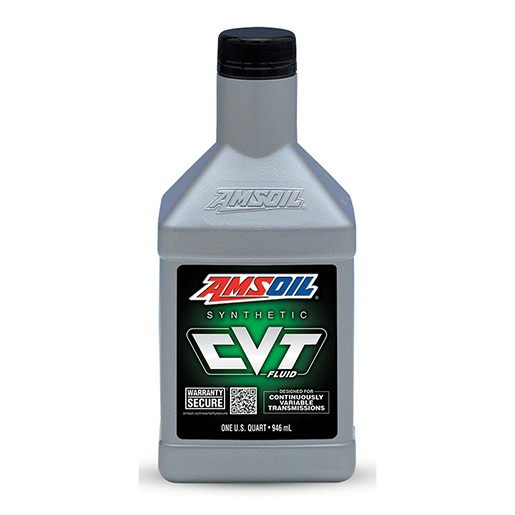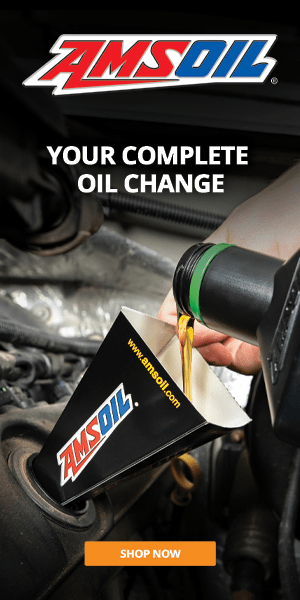Why Choosing the Right CVT Transmission Fluid is Key to Optimal Performance
When it comes to maintaining optimal performance in your vehicle, every component matters. And one crucial element that often gets overlooked is the CVT transmission fluid. Choosing the right CVT transmission fluid can make all the difference in how well your vehicle performs and how long it lasts.
The CVT (Continuously Variable Transmission) is becoming increasingly popular in modern vehicles due to its smooth and efficient operation. However, this type of transmission requires a specific type of fluid to function properly. Using the wrong fluid can lead to issues such as decreased performance, transmission slippage, and even damage to the transmission itself.
That’s why it’s essential to choose a CVT transmission fluid that is specifically formulated for your vehicle.
Whether you have a Nissan, Honda, or any other brand with a CVT, using the right fluid will ensure smooth shifting, optimal power delivery, and protection against wear and tear.
In this article, we’ll dive into the importance of choosing the right CVT transmission fluid for optimal performance. We’ll explore different brands and types of fluids, their compatibility with various vehicles, and the key factors to consider when making your selection. Stay tuned to learn how to enhance your vehicle’s performance and prolong its lifespan with the right CVT transmission fluid.
The importance of choosing the right CVT fluid
The CVT transmission fluid plays a vital role in the overall performance and longevity of your vehicle’s transmission. Unlike traditional automatic transmissions, CVTs rely on a system of belts and pulleys to provide seamless gear shifting. The fluid in a CVT not only lubricates the transmission but also transfers power between the engine and the wheels.
Using the wrong CVT transmission fluid can have serious consequences. It can lead to excessive wear and tear on the transmission components, resulting in a decrease in overall performance. The wrong fluid can also cause the transmission to slip, leading to a loss of power and reduced fuel efficiency.
Understanding CVT transmission fluid
CVT transmission fluid differs from traditional automatic transmission fluid (ATF) in several ways. CVT fluid is specially formulated to meet the unique demands of continuously variable transmissions. It has specific additives and properties that ensure smooth operation and protect against wear and tear.
One key difference between CVT fluid and ATF is the absence of friction modifiers in CVT fluid. Friction
modifiers are additives found in ATF that help improve the friction characteristics of automatic transmissions. However, these additives can cause issues in CVTs, as they can interfere with the operation of the belts and pulleys.
CVT fluid also has a different viscosity profile compared to ATF. It needs to provide sufficient lubrication and cooling for the transmission while maintaining the right level of friction to ensure smooth shifting. The viscosity of CVT fluid is typically higher than that of ATF to achieve this balance.
Signs that it’s time to change your CVT transmission fluid
Regular maintenance is crucial to ensure the optimal performance of your CVT transmission. Over time, the CVT fluid can degrade, losing its ability to lubricate and protect the transmission components. Here are some signs that it’s time to change your CVT transmission fluid:
- Slipping or jerking: If you notice that your vehicle is experiencing hesitation, slipping, or jerking during acceleration or gear changes, it could be a sign that the CVT fluid needs to be changed. Contaminated or worn-out fluid can cause these issues.
- Overheating: CVT fluid plays a vital role in cooling the transmission. If the fluid is not able to dissipate heat effectively, it can lead to overheating. Overheating can cause damage to the transmission and other components, resulting in decreased performance and potential breakdowns.
- Noise or vibrations: Unusual noises or vibrations coming from the transmission can indicate a problem with the CVT fluid. Dirty or degraded fluid can lead to increased friction and wear, causing these symptoms.
- Fluid discoloration: CVT fluid should be a clear, reddish color. If you notice that the fluid has turned dark or has a burnt smell, it’s a sign that it needs to be replaced. Contaminated fluid can cause damage to the transmission and compromise its performance.
Choosing the right CVT transmission fluid for your vehicle
When it comes to choosing the right CVT transmission fluid for your vehicle, there are a few key factors to
consider. It’s essential to select a fluid that is specifically formulated for your vehicle’s make and model, as
different manufacturers have their own requirements.
- Manufacturer recommendations: Check your vehicle’s owner’s manual or contact the manufacturer to find out the recommended CVT fluid for your specific model. Following the manufacturer’s recommendations ensures compatibility and optimal performance.
- Fluid specifications: CVT fluids have different specifications, such as viscosity, friction modifiers, and
additives. Make sure to choose a fluid that meets the specifications required by your vehicle’s manufacturer. Using the wrong fluid can lead to performance issues and potential damage. - Brand reputation: Opt for trusted and reputable brands when selecting CVT transmission fluid.
Well-established brands have a track record of producing high-quality fluids that meet industry standards and provide reliable performance.
How to change the CVT transmission fluid
Changing the CVT transmission fluid is a critical maintenance task that should be performed at regular
intervals or as recommended by the manufacturer. While the exact procedure may vary depending on the
vehicle, here are the general steps involved:
- Prepare the vehicle: Park the vehicle on a level surface and engage the parking brake. Ensure that the engine is off, and the transmission is in park or neutral.
- Locate the drain plug and drain the fluid: Consult the vehicle’s owner’s manual or service information to locate the CVT fluid drain plug. Place a drain pan beneath the drain plug and remove it to drain the old fluid.
- Replace the filter (if applicable): Some CVTs have a filter that needs to be replaced along with the fluid. If your vehicle has a filter, remove it and install a new one according to the manufacturer’s instructions.
- Refill the transmission: Once the old fluid has drained completely, reinstall the drain plug. Use a funnel to add the recommended amount of new CVT fluid into the transmission through the fill plug or dipstick tube.
- Check the fluid level: Start the engine and let it idle for a few minutes. Check the fluid level using the dipstick or the level indicator on the transmission. Add more fluid if necessary to reach the correct level.
- Dispose of the old fluid: Properly dispose of the old CVT fluid according to local regulations. Many auto parts stores or service centers accept used oil for recycling.
Common mistakes to avoid when changing CVT fluid
Changing the CVT transmission fluid requires care and attention to ensure a successful and trouble-free process. Here are some common mistakes to avoid:
- Using the wrong fluid: Always use the recommended CVT fluid for your vehicle. Using ATF or the wrong type of CVT fluid can lead to transmission damage and performance issues.
- Overfilling or underfilling: It’s crucial to add the correct amount of fluid to the transmission. Overfilling can cause foaming and reduced lubrication, while underfilling can result in inadequate cooling and lubrication.
- Reusing old gaskets or seals: When changing the CVT fluid, it’s essential to replace any gaskets or seals that may have deteriorated. Reusing old gaskets can lead to leaks and potential damage to the transmission.
- Not following the manufacturer’s instructions: Each vehicle may have specific instructions for changing the CVT fluid. Always consult the owner’s manual or service information for the correct procedure and torque specifications.
The benefits of using high-quality CVT fluid
Using high-quality CVT transmission fluid offers several benefits for your vehicle’s performance and longevity. Here are some advantages of using a reputable and premium fluid:
- Smooth shifting: High-quality CVT fluid is specifically designed to provide smooth and seamless gear shifts. It reduces friction and wear, ensuring optimal performance and improved driving experience.
- Enhanced power delivery: The right CVT fluid can optimize the power delivery from the engine to the wheels, improving acceleration and overall performance. It allows the transmission to transfer power efficiently, maximizing the vehicle’s potential.
- Protection against wear and tear: Premium CVT fluids contain additives that provide excellent lubrication and protection against wear and tear. They help reduce friction and heat, prolonging the lifespan of the transmission components.
- Improved fuel efficiency: Well-formulated CVT fluids can contribute to improved fuel efficiency by reducing friction and optimizing power transfer. A more efficient transmission means less energy loss and better mileage.
Recommended CVT transmission fluid brand
When it comes to choosing CVT transmission fluid, there are several reputable brands known for their high-quality products. This is the CVT transmission fluid that is recommended to be the best CVT fluid you can buy for any vehicle:
AMSOIL, a leading manufacturer of synthetic lubricants, offers a high-quality CVT transmission fluid that provides superior protection and performance for your vehicle.
AMSOIL’s CVT Transmission Fluid is specifically formulated to meet the needs of modern CVT transmissions. It is engineered with a blend of premium base oils and advanced additives to provide exceptional resistance against wear, oxidation, and deposits. This ensures optimum performance and extended service life for your CVT transmission, even under severe driving conditions.

One key advantage of using AMSOIL CVT Transmission Fluid is its ability to deliver smooth shifting throughout the entire speed range. The precisely balanced frictional properties of this fluid help prevent belt slippage and ensure quick acceleration when needed. Additionally, it offers excellent thermal stability, which helps maintain proper viscosity even at extreme temperatures – an important factor in protecting your transmission from damage caused by overheating.
Conclusion
Choosing the right CVT transmission fluid is crucial for maintaining optimal performance and extending the lifespan of your vehicle’s transmission. By understanding the importance of CVT fluid, recognizing the signs that it needs to be changed, and following the manufacturer’s recommendations, you can ensure that your vehicle operates at its best.
Remember to choose a CVT fluid that meets the specifications required by your vehicle’s manufacturer and consider reputable brands known for their quality. By taking the time to select the right fluid and performing regular maintenance, you can enjoy smooth shifting, enhanced power delivery, and protection against wear and tear.
Investing in high-quality CVT transmission fluid is an investment in the longevity and performance of your
vehicle. So, make the right choice and experience the benefits of optimal CVT performance.

